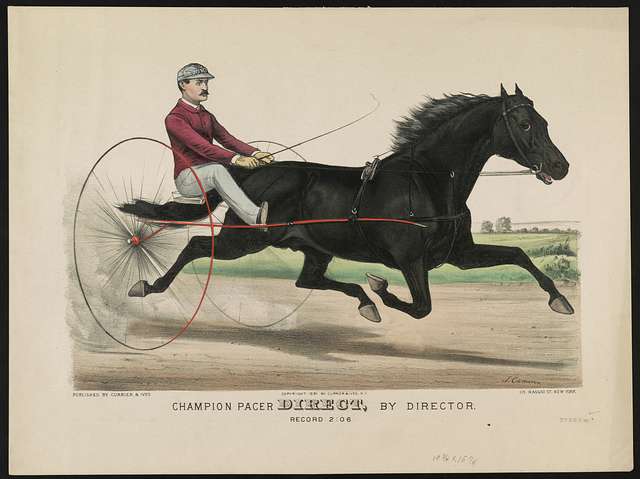How to Control Narrative Pacing in Your Novel

What is Narrative Pacing?
Narrative pacing is a term to describe how the book feels to a reader—fast or slow. It’s the momentum the reader feels to pull them forward in the story. Your reader wants to feel immersed in the actions and thoughts of the characters.
Writer David Mamet said:
Clunky language, bad dialogue, and poorly-conceived scenes will all draw your reader out of the story. Pace will help keep them there.
Good pacing is crucial to the flow of your story’s narrative. It’s the glue that cements your reader to the story. When pacing fails, readers become disinterested, disappointed, or even angry. They may not know why the story didn’t hold their interest, but they may put down your book, never to pick it up again.
In a mystery novel, you want to keep the reader involved in guessing the final outcome while leading them through the story through the eyes of the detective. You control the pace and the tension building the story scene by scene.
Language
Your choice of language can speed up the story or slow it down. Dialogue and action speed things up. Keep paragraphs short. Visually your reader sees a lot of white space on the page and reads down.
Descriptive passages tend to slow down the story. If you need narrative description, break up the text into short paragraphs rather than one long passage. This will help your reader keep going down the page.
Break up long passages with short dialogue. Even a brief exchange will liven the pace. On the other hand, if you have a long section of dialogue, insert brief narrative descriptions like what the characters see or how the weather affects their action. You’ll keep the reader grounded in time and place.
At the paragraph level, vary your sentence length. For example, a long sentence will slow down a reader. Surround that sentence with short sentences.
Conflict
To create successful conflict in your story, first, your reader must be invested in the character. They must care about the character. Otherwise, they won’t care about the threat, large or small, to the character’s well being.
Early on, introduce your reader to your character’s vulnerability and to their desire. Setting up this contrast immediately introduces tension and prepares your reader for any obstacles that confront your character later in the story.
Each subsequent conflict, whether large or small, tests your character’s strengths and weaknesses.
As you introduce each character trait, opinion, and response, you give your reader more opportunity to care.
So, save the fight scenes and battles of wits for later in the story. First, give your reader moments to empathize and care for your hero.
Stakes
Along with character traits, your protagonist needs at least one goal. And the reader needs to know the consequences of not reaching the goal.
Mystery writers have a clear goal—catch the villain. But you also need to clarify what the stakes are if your sleuth fails.
As your sleuth tries to solve the mystery puzzle, smaller goals and accompanying stakes help you build conflict and tension in the long middle. And here’s where you can make the situation go from bad to worse. And just to add complication, what if your character gets what they want, but getting what they want puts them in an even worse position than they were before.
You can bump up the stakes by adding a ticking clock. Your sleuth must solve the crime before a certain time. For an amateur sleuth, you can invent a deadline related to their personal life. Be careful with law enforcement professionals and a ticking clock. For instance, a homicide detective would not take on a case one month before retirement.
Stakes build tension. When your protagonist meets an obstacle, and the reader knows the consequences of failure, they become emotionally invested in the scene.
Scene Sequence
Control the pace for your reader by balancing action scenes with reflective, internal moments. You give your reader excitement and recovery. You are creating momentum.
Use the quieter scenes to share relationship details or your character’s thoughts and memories. They can take a break from sleuthing. These scenes give readers a chance to orient themselves in the story and process their reactions. James Lee Burke sends Dave Robicheaux fishing between dramatic moments.
The balance between action and reflection keeps your reader from tedium or overwhelm; too much of the same pace and your reader loses interest.
The purpose of each scene is to move the story forward. Beginning writers often wrestle with scenes filled with description or backstory because they feel the reader needs to know everything.
Randy Ingermanson outlines the three basic components of alternating active and reactive scenes.
Active scene:
- Goal
- Conflict
- Disaster
Sequel scene:
- Reaction
- Dilemma
- Decision
Although the elements seem simplistic, you’ll find alternating the scenes creates the balance you need to maintain pacing throughout the story. Build tension by escalating the conflict and raising the stakes, but keep the scene alternation sequence.
Tension that Builds to a Climax
Using all the pacing techniques, you build tension by raising stakes and putting your hero a greater risk. Whether it’s a decision that leads to action or action that leads to a new decision, keep alternating your scenes.
Test your hero’s weaknesses. Use his strengths to create conflict. Your pacing is the momentum that pushes your reader toward the final climax.
Pacing is Under Your Control
Novel pacing can be one of the biggest challenges for beginning writers. These guidelines may seem simple—short and long sentences, action and dialogue, conflict and stakes, alternating scenes. But, master writers follow these precepts.
Test your skill by writing two scenes in your story, incorporating all these techniques. You’ll find they are not limiting. And, you’ll discover that they help you build momentum.
Love talking about mystery writing? Join the Mystery Writers Studio.






